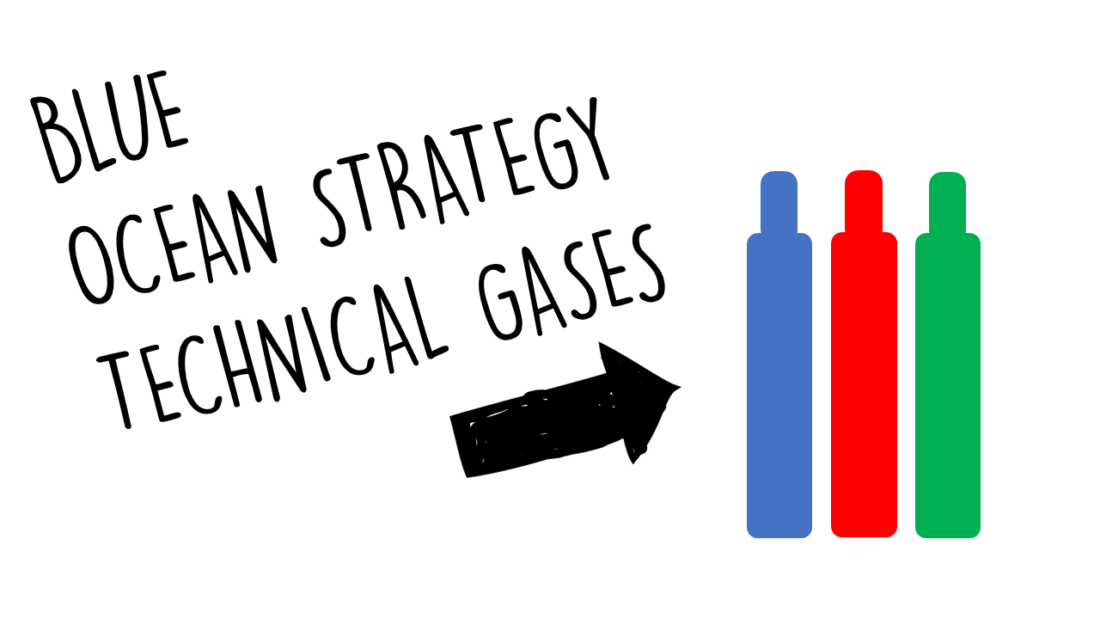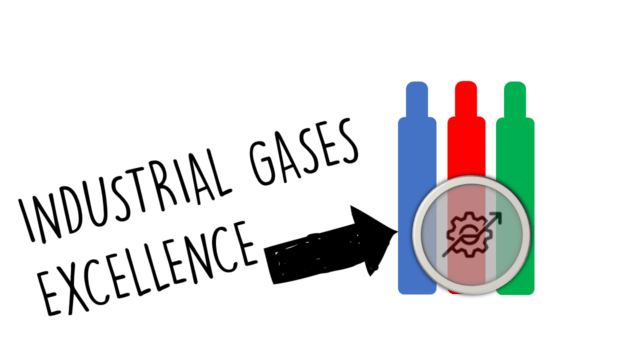Introduction: Exploring the Concept of Blue Ocean Strategies in the Technical Gases Industry
Blue Ocean Strategies refer to a business approach that focuses on creating new market spaces and opportunities rather than competing in existing ones. This concept was introduced by W. Chan Kim and Renée Mauborgne in their book “Blue Ocean Strategy” and has gained significant attention in various industries, including the technical gases industry.
In the technical gases industry, innovation and differentiation are crucial for companies to stay competitive and thrive. Technical gases, such as oxygen, nitrogen, and hydrogen, are essential for a wide range of industries, including healthcare, manufacturing, and energy. As the demand for these gases continues to grow, companies need to find ways to stand out from their competitors and offer unique value propositions.
Understanding the Current State of the Technical Gases Industry
The technical gases industry is a global market that is expected to reach a value of $130 billion by 2025, growing at a CAGR of 6% during the forecast period. The industry is driven by various factors, including the increasing demand for healthcare services, the growth of the manufacturing sector, and the rising adoption of clean energy solutions.
Key players in the technical gases industry include Linde plc, Air Liquide SA, Praxair Inc., and Air Products and Chemicals Inc. These companies dominate the market and have a significant presence worldwide. The market dynamics are characterized by intense competition, price wars, and a focus on cost-cutting measures.
Red Ocean Strategies: The Challenges and Limitations of Traditional Approaches
Red Ocean Strategies refer to traditional approaches that focus on competing within existing market spaces. In the technical gases industry, this often leads to price wars and intense competition among companies. While this approach may result in short-term gains, it limits long-term growth and profitability.
One of the main limitations of red ocean strategies is the lack of differentiation and innovation. Companies that compete solely on price often find it challenging to differentiate themselves from their competitors. This leads to a commoditization of products and services, where customers choose suppliers based on price rather than value.
The Emergence of Blue Ocean Strategies in the Technical Gases Industry
In response to the challenges and limitations of red ocean strategies, many companies in the technical gases industry are shifting towards blue ocean strategies. These strategies focus on creating new market spaces and opportunities by offering unique value propositions to customers.
One example of a company adopting a blue ocean strategy in the technical gases industry is Linde plc. The company has invested heavily in research and development to develop innovative solutions for its customers. By offering customized gas mixtures and advanced gas applications, Linde has been able to differentiate itself from its competitors and create new demand.
Case Studies: Successful Implementation of Blue Ocean Strategies in Technical Gases Companies
Case Study 1: Company A’s successful implementation of a blue ocean strategy
Company A, a leading player in the technical gases industry, identified an unmet need in the healthcare sector. They developed a new gas mixture that improved patient outcomes during surgeries. By collaborating with hospitals and healthcare providers, Company A was able to create a new market space and establish itself as a leader in this niche.
Case Study 2: Company B’s innovative approach to creating new demand
Company B recognized the growing demand for clean energy solutions and developed a hydrogen fuel cell technology that could be used in various applications, including transportation and power generation. By focusing on this untapped market space, Company B was able to differentiate itself from its competitors and gain a competitive advantage.
Key Principles of Blue Ocean Strategies in the Technical Gases Industry
Value innovation is a key principle of blue ocean strategies in the technical gases industry. Companies need to focus on creating new value for their customers by offering unique products or services that address their needs and pain points. This requires a deep understanding of customer preferences and market trends.
Simultaneous pursuit of differentiation and low cost is another important principle of blue ocean strategies. Companies need to find ways to differentiate themselves from their competitors while maintaining competitive pricing. This can be achieved through operational efficiencies, technological advancements, and strategic partnerships.
Focus on non-customers and untapped market spaces is also crucial for the success of blue ocean strategies. Companies should not only focus on existing customers but also identify potential customers who are currently not being served by the industry. By understanding their needs and developing innovative solutions, companies can create new demand and expand their market reach.
Identifying Untapped Market Spaces and Creating New Demand
To identify untapped market spaces in the technical gases industry, companies need to analyze customer needs and pain points. This can be done through market research, customer surveys, and feedback from industry experts. By understanding the challenges faced by customers, companies can develop innovative solutions that address these needs.
In addition to identifying unmet needs, companies should also look for market gaps where there is limited competition or no existing solutions. These gaps can be identified through a thorough analysis of the competitive landscape and market trends. By filling these gaps, companies can create new demand and establish themselves as leaders in these niche markets.
Redefining Industry Boundaries: How Blue Ocean Strategies Disrupt the Technical Gases Market
Blue ocean strategies in the technical gases industry involve breaking away from industry norms and conventions. Companies need to challenge existing business models and value chains to create new market spaces and opportunities. This requires a willingness to take risks and think outside the box.
By redefining industry boundaries, companies can disrupt the technical gases market and gain a competitive advantage. This can be achieved through product innovation, process improvements, or the development of new business models. Companies that are able to successfully redefine industry boundaries are more likely to succeed in the long term.
Leveraging Technology and Innovation to Drive Blue Ocean Strategies in the Technical Gases Industry
Technology and innovation play a crucial role in driving blue ocean strategies in the technical gases industry. Companies need to invest in research and development to develop new products, improve existing ones, and find ways to deliver value to customers more efficiently.
One example of technological advancements driving blue ocean strategies in the technical gases industry is the development of advanced gas applications. Companies are using cutting-edge technologies to develop gases that can be used in various industries, such as healthcare, electronics, and automotive. These innovative solutions create new market spaces and opportunities for companies.
Conclusion: The Future of the Technical Gases Industry through Blue Ocean Strategies
The technical gases industry has significant growth potential, and companies that adopt blue ocean strategies are more likely to succeed in this competitive market. By focusing on innovation, differentiation, and creating new market spaces, companies can stay ahead of their competitors and meet the evolving needs of their customers.
Continuous innovation and adaptation are crucial for companies in the technical gases industry to thrive in a rapidly changing market. By embracing blue ocean strategies, companies can create new value for their customers, redefine industry boundaries, and drive growth and success in the future.




